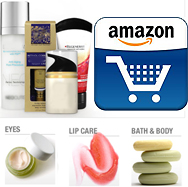“2013 is Amazon’s year of beauty,” claimed Chance Wales, director of the health and beauty category for the e-commerce giant talking to WWD last month, confirming Amazon’s plans to become beauty retailers’ largest rival.
Will this be a killer for some beauty categories?
Amazon is many things to different beauty marketers and retailers. To some it is a retailer, to others it is a service provider facilitating e-commerce operations through Amazon Web Services. However, to nearly all beauty marketers and retailers, Amazon is a competitive threat.
Is Amazon’s success guaranteed?
Amazon has transformed the shopping environment in almost every category it has approached, successfully chipping away from big-box retailers in everything from books to consumer electronics. Whether it can succeed now that it is targeting the beauty business is a different story.
As a pure online retailer, Amazon provides the convenience of at-home shopping, along with often lower prices; additionally, it is not required to collect sales tax in many states, except those where it has a physical presence. However, several states have recently considered or passed legislation that requires out-of-state retailers to collect sales taxes on their behalf, which could eliminate one of Amazon’s advantages.
Amazon is a rather complex organization drawing on three main revenue streams:
Direct Retail, which is composed of merchandise that Amazon owns and fulfills either via Amazon.com or one of its subsidiaries, such as zappos.com, soap.com, or beautybar.com. Kline estimates that beauty accounts for less than 1% of Amazon’s U.S. Direct Retail sales in all categories in 2012.
Third-party Marketplace is a platform where marketers and retailers can set up a shop to sell their products, which can be fulfilled by Amazon or by the third party independently. For this service, Amazon takes a commission equal to approximately 15-20% of the total sale, depending upon the category. For example, Sephora.com has a storefront at www.amazon.com/beauty, as does approximately 50 other retails, some pure play online and some with physical locations.
Amazon Web Services, also known as AWS, provides other marketers and retailers cloud-based online services with technology that keeps the Amazon.com operation working.
The big dilemma for beauty marketers is that for products sold directly through Amazon, the retailer controls the price and typically discounts by a substantial amount, which could be a major barrier for an established beauty marketer to cross. Selling directly on Amazon could hurt brands’ relationships with existing retail partners. However, even if a brand doesn’t sell directly to Amazon, the brand might still be sold on Amazon without its owner’s consent due to diversion and at a sizeable discount off the manufacturers’ suggested price.
In the United States, beauty e-commerce generated nearly $1.5 billion at the manufacturers’ level in 2012, accounting for 3.6% of total beauty sales, according to Kline’s Beauty Retailing Report USA. However, e-commerce is growing rapidly at an average of nearly 26% annually since 2007.
Just how large is the Amazon beauty business? The retailer enjoyed U.S. general merchandize sales totalling $ 23.4 billion in 2012. Figuring beauty sales at a mere 1.0% that would still amount to an impressive $ 234 million gross in beauty sales. What is more astonishing is that sales grow 34% during 2012. Indeed, sales grow dramatically every year.
So…
Could Amazon one day overtake Walmart to be one of the leading beauty retailers in the United States, or could it already be there?
If U.S. states without a physical Amazon presence mandate that Amazon collect sales tax on their behalf on purchases, will this significantly negate some of Amazon’s advantage?
What are the key indicators of whether Amazon.com will succeed in its plans on a quest to conquer the beauty market?
Kline’s Beauty Retailing USA report – currently in progress – provides a comprehensive analysis of the changing and increasingly complex beauty retail environment. Complementing a review of each major retail channel, this report profoundly assays several beauty retailers including Amazon, Sephora, Ulta, Walgreens, and more.
Written by Donna Barson, Kline’s Senior Associate, Consumer Product Practice

